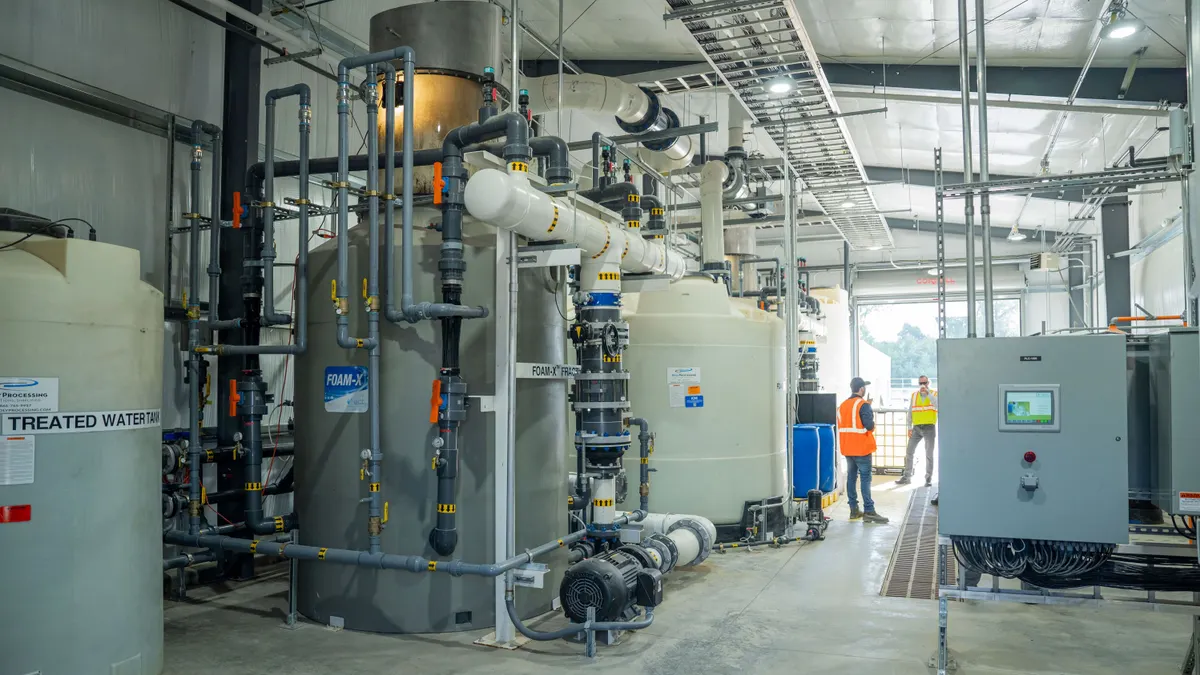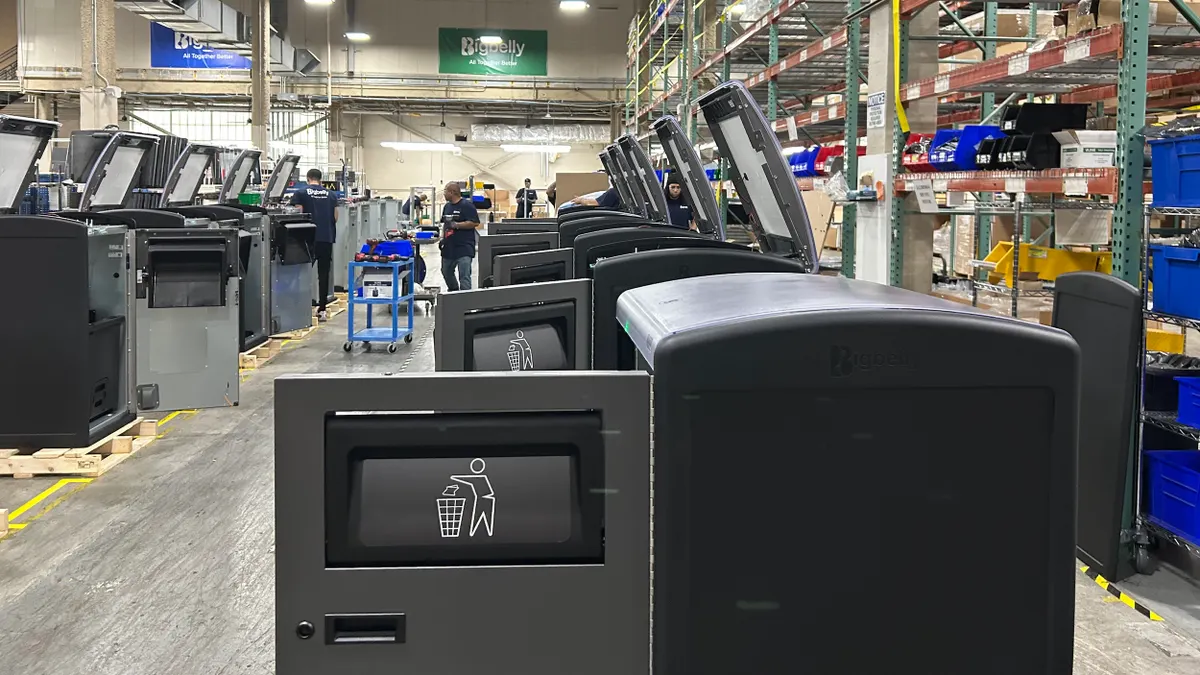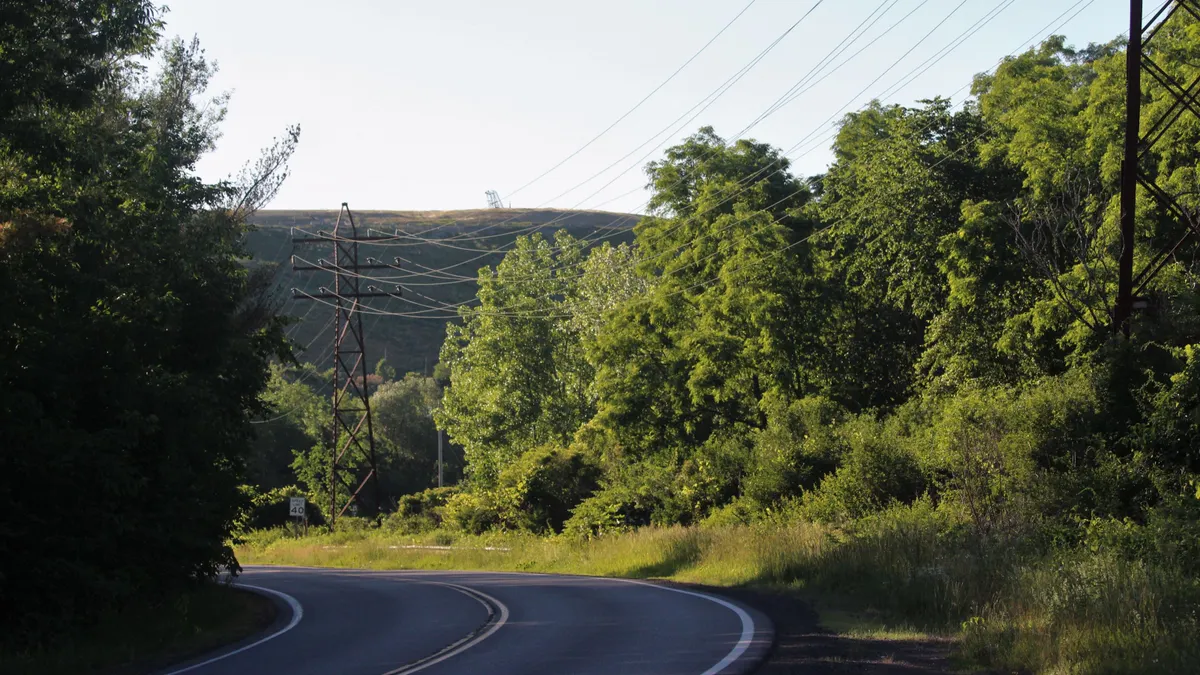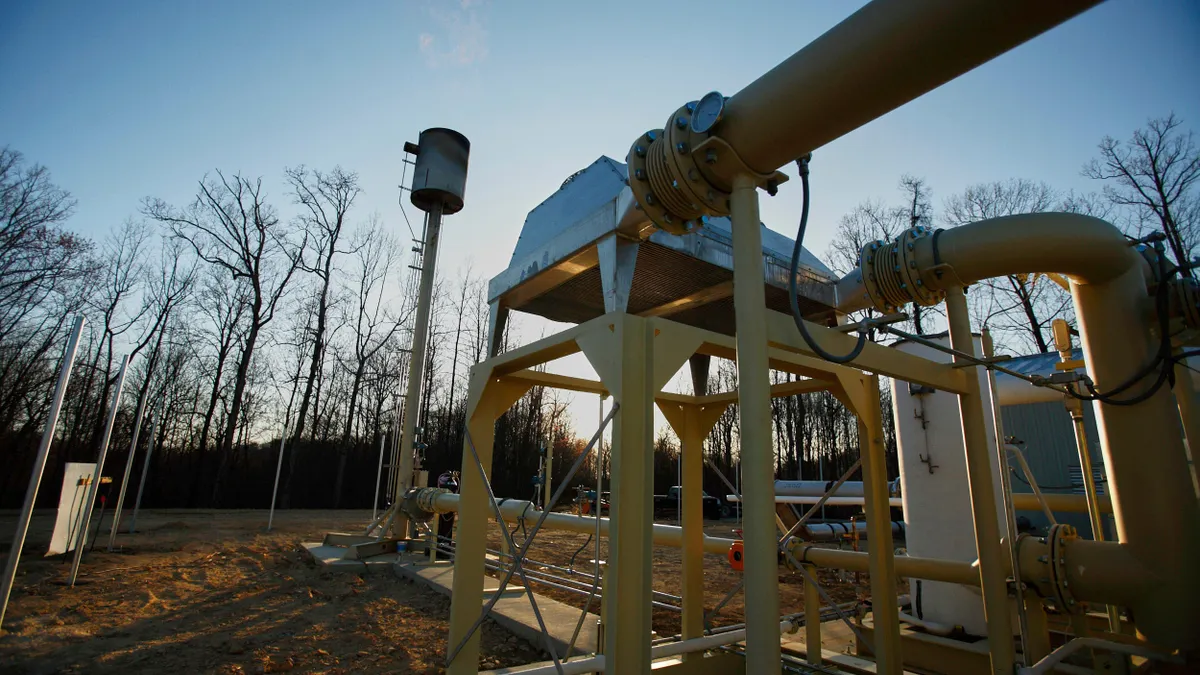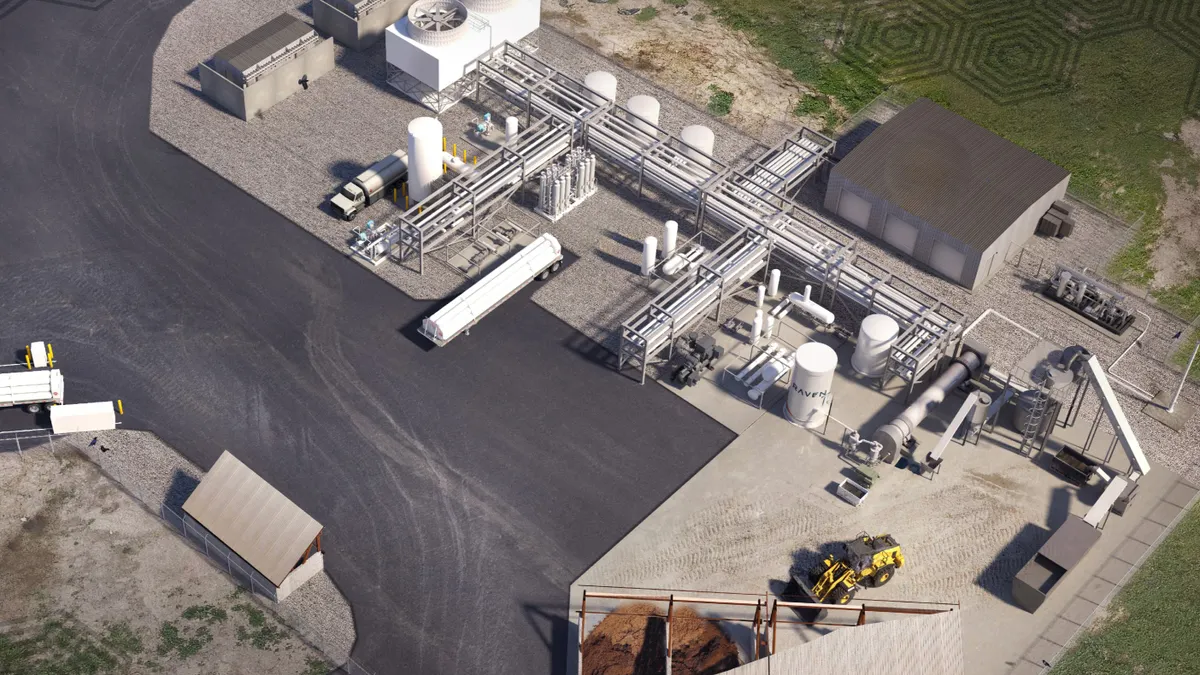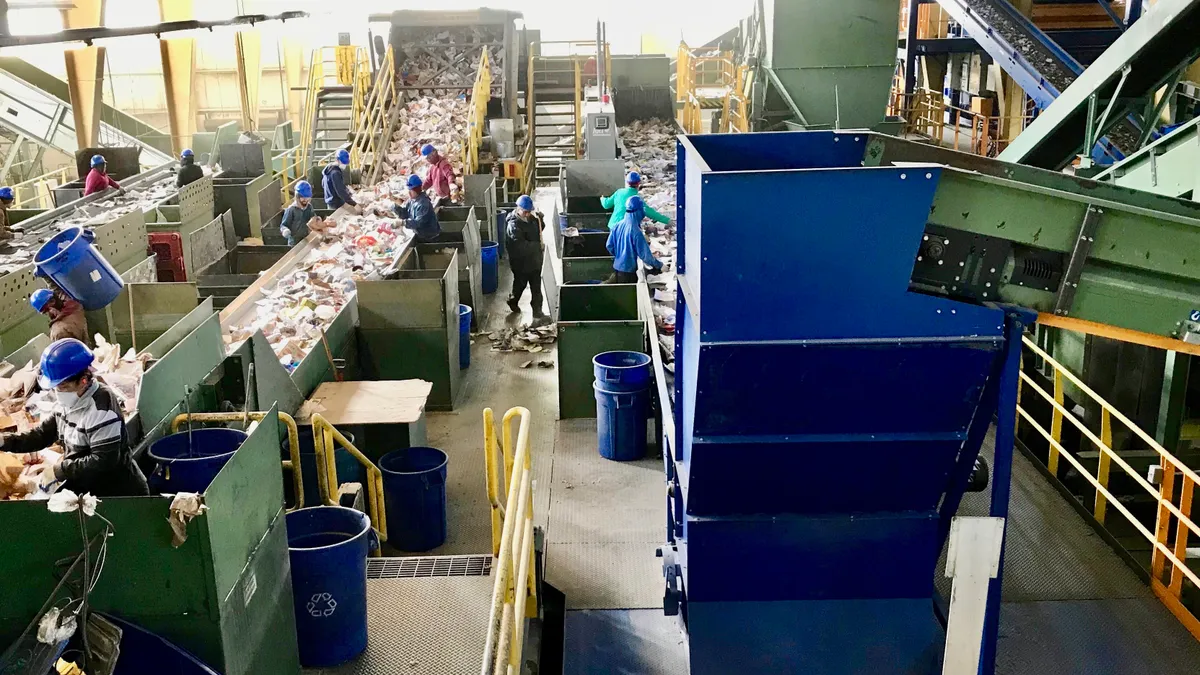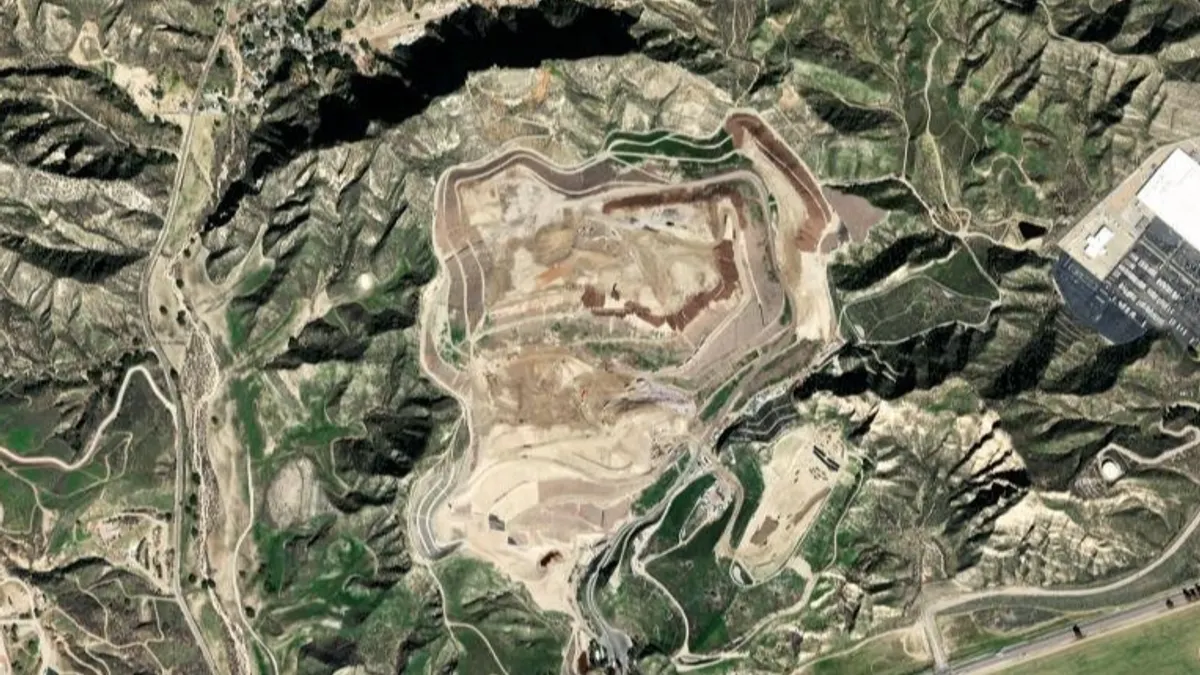Montrose Environmental Group’s PFAS remediation and research division aims to help “future-proof” its customers’ remediation efforts amid uncertainties with state and federal regulations.
PFAS contamination concerns are a growing issue across the country, with some states taking a closer look at how to manage the per- and polyfluoroalkyl substances in biosolids, landfill leachate and drinking water. At the same time, the U.S. EPA recently rolled back some parts of its PFAS drinking water standard, a move that could impact demand for some types of PFAS remediation services.
While some industries have decided to take a wait-and-see approach on PFAS regulations before investing in remediation, some landfill operators and waste industry customers have taken the lead on implementing such technologies, said Dave Kempisty, vice president of technology for research and development at Montrose.
Montrose has recently worked with companies like Waste Connections on landfill leachate management tech. It recently invested more time and energy into its PFAS R&D division in an effort to advance water treatment, detection and testing technologies.
“A lot of my time is spent on handling how to find better ways to tackle PFAS challenges, both analytically and treatment-wise,” he said.
Kempisty talked with Waste Dive about Montrose’s strategies for designing bespoke PFAS solutions meant to weather future uncertainties over regulations and remediation demands.
This conversation was edited for length and clarity.
WASTE DIVE: Montrose offers PFAS services to a range of industries. Where does the landfill and overall waste sector fit into your services portfolio, and what kind of services or assistance are operators asking for?
KEMPISTY: Landfills are definitely an active area for us, and we have a treatment technology that seems to work really well for the landfill space, which is foam fractionation. We have other offerings that work well, but foam fractionation avoids a lot of pre-treatment. With landfill leachate, you don't have to get it to drinking water or non-detect kind of levels, though we also have those technologies and could clean it to that level, too.
We've had two landfills come to us recently for the application of this treatment technology to treat their PFAS. One of them was driven by regulatory-based measures in Michigan, and they have industrial pre-treatment permits that they have to meet before the landfill can discharge their leachate to a wastewater recovery facility or wastewater treatment plant. So they were compelled by the state's IPP program.
A second example is a company that was not compelled by regulations. They were in a different state, but they had multiple landfills, and they were trying to get ahead of things and like, what will this cost? What will this look like? How robust is it? How operator friendly or not friendly is it?
We analyzed their landfill leachate characteristics and we put in this foam fractionation technology, and now they're operating as a hub and spoke model. They'll truck in landfill leachate from different landfills, and we're able to continuously treat that landfill leachate from different locations for them. That's not compelled by regulation. So we've seen both sides of this from a customer perspective
We recently saw federal PFAS regulations for drinking water rolled back. How does that change what customers are coming to you for or how you approach your service offerings?
It’s tough to read the tea leaves as far as what the administration is going to do, or how fast the administration is going to move. There’s some slowdown, but we've still seen inquiries and customers that still want to talk. I work in research and development, where we want to understand the best treatment train for a particular kind of water. Landfill A has different water than landfill B, so just because a particular treatment worked with landfill A doesn't mean that's going to work with B.
We have not seen a decrease in appetite for bench scale work, or even pilot scale work, to show that we can remove this from your particular water. Landfills are still moving forward with PFAS remediation at a pretty good pace. Whereas on the larger scale, industrial wise, we've seen some other types of customers do the wait-and-see approach. Maybe that’s because landfills are one of the more mature industries that was moving forward and was getting to that stage where we know the methods have been documented and demonstrated.
There's also quite a bit of interest in the destruction of PFAS and different technologies that can get you there. For all of them, you need to concentrate the PFAS beforehand to make that economically viable, maybe through a process like foam fractionation or regenerable ion exchange resin. After we produce this concentrate, we work with a variety of vendors that can do, say, super critical water oxidation, hydrothermal alkaline treatment or electrochemical oxidation.
We're technology agnostic, and I don't think there's going to be one winner that wins the destruction race. It depends on a variety of reasons why you'd go with one over another. We look at which one has the greatest efficacy, and look at power requirements, and look at volume and throughput capacity and things of that nature.
Another aspect is the municipal side and drinking water treatment. One consideration is what to do with the waste residuals. Say you use granular activated carbon as a treatment method, and it’s all spent or it no longer has capacity to take in more PFAS. What do you do with it? You can landfill it, or you can reactivate the carbon.
If they were to put shorter-chain PFAS compounds into a drinking water maximum contaminant level regulation, granular activated carbon would struggle with that. An ion exchange method does well with that, and can remove that, but eventually you're going to exhaust the ion exchange resin, and so you're going to put that in a landfill too.
We've got a regenerable ion exchange offering where we can pass an alcohol brine solution through the resin that removes the PFAS, so you can use the resin again and again. It helps with waste minimization, and if you're not generating as much waste there's not nearly as much future liability. And you can get to these lower levels by performing more regenerations. The cost of a regeneration versus the cost of buying new media is fractional, about 1/10 the price.
This kind of reuse offering is a big part of our drinking water market, and we're hoping it's going to get bigger.
Another driver in the PFAS remediation market seems to be the regulation of PFAS in biosolids, most recently in places like Maine and Texas. Where does Montrose see itself in that sphere?
We're definitely seeing some good results with biosolids. It’s a big challenge, and a challenge I think is really interesting. You remove the PFAS in two phases: the wastewater and the biosolids. One of our products, called NanoSorb, can remove the PFAS from the wastewater, and that puts it in the biosolids. Your biosolids were already impacted, and now they're impacted slightly more. That didn't resonate that well with the community.
There’s now much more interest on the biosolids side, so we've configured ways to use the same technology, but to treat further upstream in the process to get a more concentrated treatment. The biosolids produced downstream are not PFAS free, but they're now under the thresholds that have been established by various states.
Biosolids are going to be a big liability in the coming years, and we're exploring more treatment possibilities and talking to customers and piloting options and showing our work with data to say, “Here's what we can do for you.” We've had a lot of interest in that, and though we have no full-scale systems to date on that, it’s something we’re actively working on.
For PFAS, we’re trying to find the right treatment solution for a particular issue, and that means not trying to fit a round peg in a square hole or pushing one particular technology. We want to know what the specific treatment objective is and figure out your treatment train. We think this is the best way to go forward and try to solve these problems, as opposed to a single solution for every opportunity.


